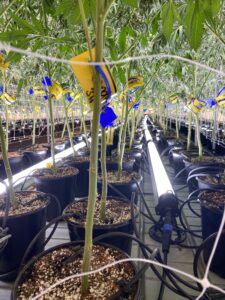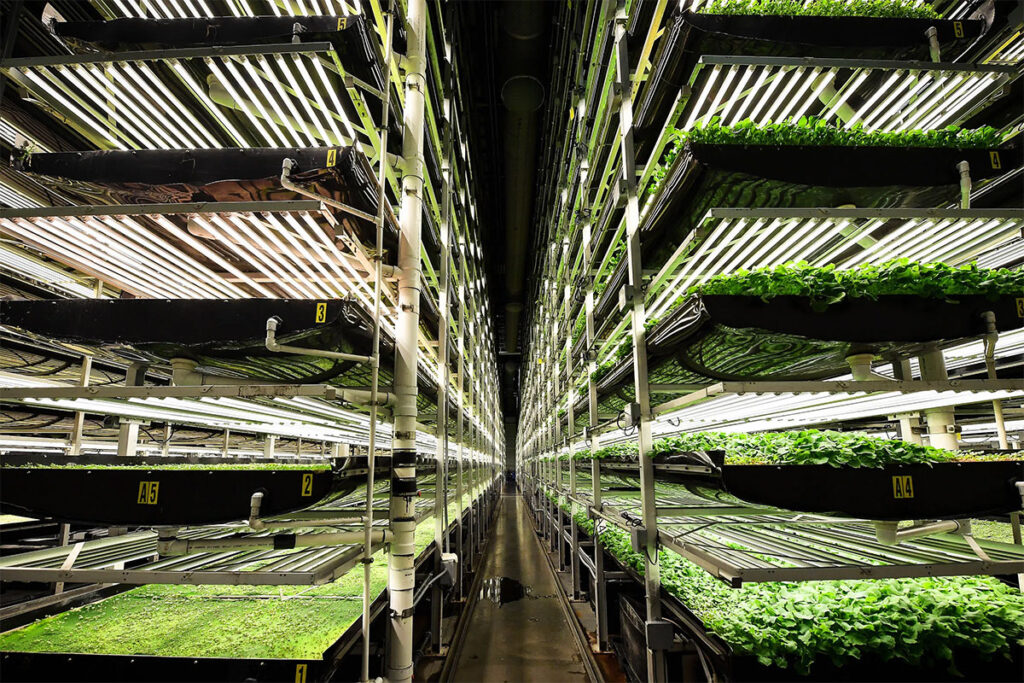
Menu
Menu

In the realm of indoor cannabis cultivation, a profound understanding of the plant’s innate growth cycle, coupled with its specific light cycle and spectrum demands, is the cornerstone of producing top-quality yields. Cannabis, being inherently photosensitive, hinges its development on the precise amount and quality of light exposure it receives within a 24-hour cycle. Consequently, your light regimen emerges as a linchpin in fostering optimal plant growth.
The diverse wavelengths of light wield varying degrees of influence on cannabis plants, contingent on their stage of growth, environmental conditions, and the specific strain under cultivation. Deliberately orchestrating the interplay of light and darkness, alongside a judicious selection of the photosynthetic active radiation (PAR) light spectrum, at each developmental stage can be the catalyst for accelerated growth. Skillfully manipulating the cannabis light cycle can even lead to pre-flowering growth enhancements, culminating in an unequivocal uptick in both quality and yield.
The cannabis growth cycle can be neatly compartmentalized into four pivotal stages: germination, seedling, vegetative, and flowering. Mastery of the indoor cannabis light cycle is essential to ensure you make the right choices regarding grow lights and spectra for each stage.
Let’s embark on a comprehensive exploration of these four light stages for the cultivation of cannabis (commonly known as weed or pot):
The germination stage marks the initial step in the cannabis plant’s journey and may span anywhere from 5 to 10 days, with some cannabis seeds sprouting as early as 2 days and others as late as 10 days. During this critical phase, adhering to a meticulously structured light cycle indoors is paramount. Typically, cannabis plants thrive on a regimen of 16 hours of light followed by 8 hours of darkness during germination. While this stage exhibits relatively lower susceptibility to varying light spectrums compared to the subsequent vegetative and flowering stages, it is still prudent to employ the appropriate spectrum of light, often rich in red wavelengths. Red light fosters germination, whereas blue light can have a counterproductive effect. More>>
Following successful sprouting, the seedlings are transplanted into new containers, where they will reside in the delicate seedling phase for the subsequent 2 to 3 weeks. After germination, the plant’s focus shifts to the development of its root system, necessitating an ever-expanding network for nutrient uptake. As the seedling explores its surroundings in search of sustenance, it begins to produce sets of leaves, typically appearing in sets of 2 or 3 initially and progressing to 5 or 7. During this phase, seedlings require fewer soil nutrients and less water compared to the later growth stages.
A prevalent pitfall during the seedling stage is overfeeding, often done with good intentions but resulting in stunted growth and diminished yields. The recommended light cycle during this phase comprises 18 hours of light and 6 hours of darkness, mirroring an extended summer day. Optimal growth is stimulated by an LED blue light spectrum during the first 10–14 days, fostering the development of healthier leaves. The transition to the vegetative stage occurs once the marijuana plants have established healthy leaves and at least 3 nodes. More >>
The vegetative stage of cannabis cultivation heralds a period of prolific vertical growth, akin to human adolescence. This phase endures between 3 to 16 weeks and necessitates a daily light regimen of 18 hours of full-spectrum light, coupled with 6 hours of darkness. While some advocate for 24-hour light cycles during this stage, such a choice may lead to nutritional imbalances and hindered growth in the subsequent flowering phase. The darkness intervals facilitate the translocation of nutrients and stored energy in the form of sugars, priming the plant for another day of growth.
During the vegetative stage, both the roots and foliage of cannabis plants undergo rapid development, facilitated by blue-enriched light, ideally hovering around 450nm. In this regard, we recommend the sleek and lightweight LED grow lights of the LLI series. These lights offer precise light control through a dimmer option and both the Icarus products, known for their outstanding output performance and uniform light distribution. The engineered light spectrum maximizes photosynthesis and growth, making them ideal not only for the vegetative stage but also for multiple light and growth cycles preceding it. More >>
The flowering stage is often the most exhilarating phase for cannabis growers, as it marks the culmination of their diligent efforts with the emergence of aromatic buds. To unlock the full potential of your plants, meticulous adherence to light cycles and the corresponding spectra is imperative.
The duration of the flowering stage is contingent upon the strain and varies between 8 to 11 weeks. Notably, during the transition from the vegetative to the flowering phases, the plant will emanate a distinctive aroma.
During this stage, it is recommended to maintain a light cycle consisting of 12 hours of full-spectrum light followed by 12 hours of darkness. This cycle mimics the natural exposure and progression of sunlight during the autumn transition. Consequently, this period witnesses the growth of the plants’ buds, the darkening of pistils, and the whitening of trichomes.
During the flowering stage, the employment of the red light spectrum proves exceptionally effective. Lighting solutions rich in red light, such as our HM Series or AK series, are adept at emulating the low-angle late summer and autumn sun, yielding denser, more resinous buds and accelerated growth. The red wavelengths at 660 nm peak during photosynthesis, contributing to robust plant growth in this final phase. While broad-spectrum UV lighting can enhance THC production, it is not recommended for optimizing CBD production, as it often yields the opposite effect.
When it comes to lighting, the choice of spectrum holds paramount importance. Our HM series offers full-spectrum LED Grow lights that deliver efficient illumination while minimizing power consumption and heat generation, making them an ideal choice for discerning indoor cannabis growers.

Grow Pros Solutions is the NOW for Horticultural Science & Engineering. Grow Pros Solutions is one of the leading manufacturers of high-performance LED grow lights designed for cannabis cultivation. Our focus is to create top performing lighting solutions and fixtures that enable previously unobtainable and unthinkable results, increasing productivity from 30-60%. Our unwavering commitment to advancing technology and finding more efficient and sustainable solutions has made us a gamechanger for thousands of commercial and home growers.
Enter your email here to confirm your interest
All Rights Reserved by GrowPros Solutions